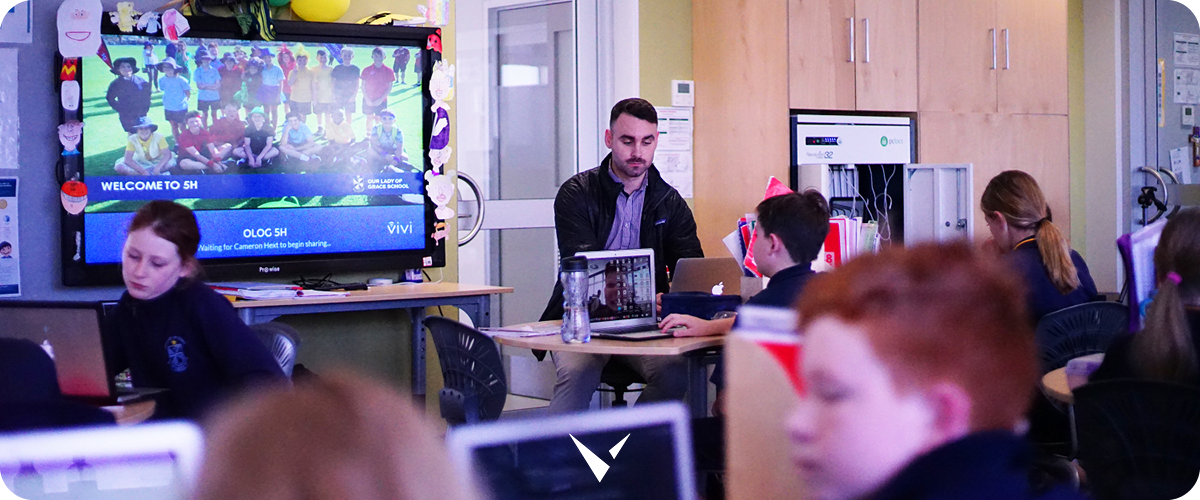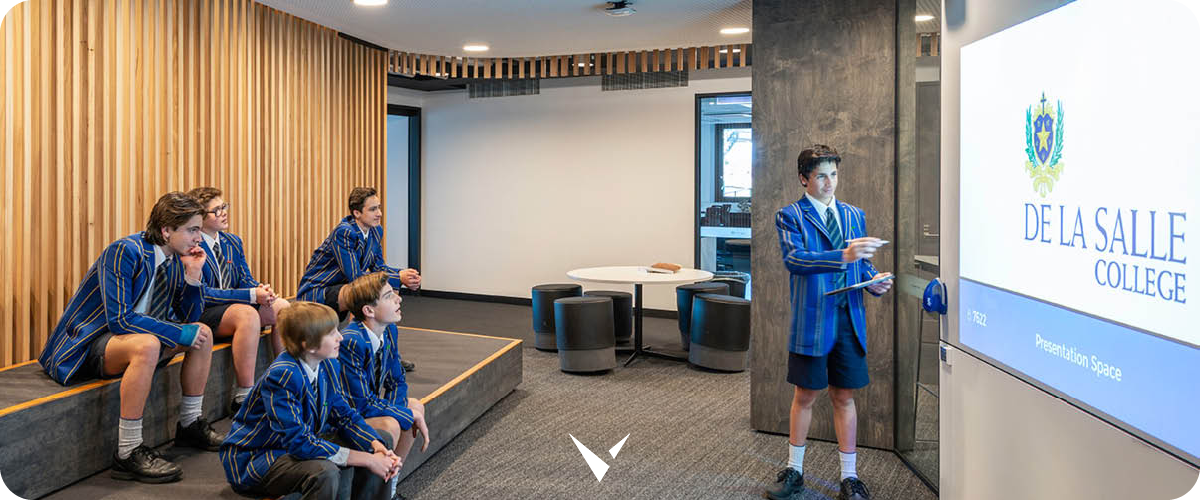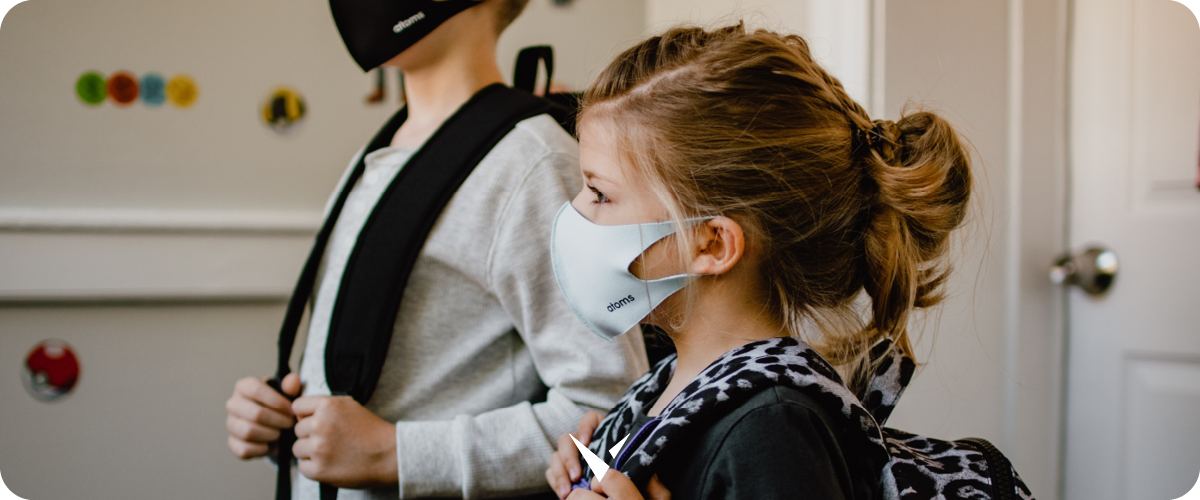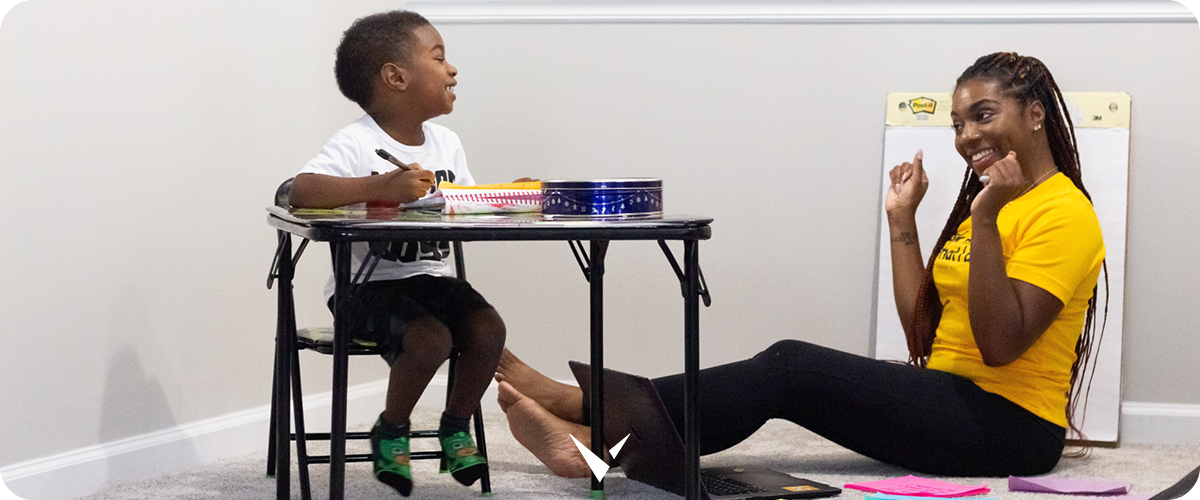The Rise of Personalized Learning Technology in the Classroom
The use of personalized learning technology to bolster student educational programs has picked up steam over the past years as innovations have advanced. But the concept of personalized learning has been around for decades.
As technology prices have dropped, the ability for school districts to use technology to help students learn at their own pace has become more of a reality. Here we discuss personalized learning and the ways technology can help teachers and IT ensure that every student has an attainable path to academic success that meets their individual needs.
Education Technology Encourages Student-Centered Strategies in Education

Personalized learning structures start and end with the idea that employed learning strategies should be centered around the student. The enabling technology makes education a two-way street where the student actively participates in learning at their own level and according to the style of learning that works for them.
Related: How to Improve Student Engagement in the Classroom
Guided by the teacher, students can have input in their learning. Groups of students can use different learning technologies and different apps to get to the same place as another group using something different. Together, the student and teacher control the pace of learning, assisted by digital technology that can be employed by educators in several ways to ensure that no one falls behind and that collaboration can still happen within the classroom.
Tech Gives Teachers the Ability to Focus More of Their In-Class Time on Students
In some ways, personalized learning technology places the human touch back into the learning process. Educational technology may free up teachers’ time, giving them the ability to connect with their students. Wireless screen mirroring, gamification, and other personalized learning technology have made it easier for educators and IT to ensure their students understand the curriculum and that academic goals are being met.
It may be easier for teachers to identify and help students who require more assistance while allowing other students to continue their own self-directed learning schedules. Wireless screen mirroring, for instance, gives teachers the freedom to move around the class to offer more individualized attention versus being tied to the front of the room.
How Personalized Learning Technology Supports Self-Directed Learning Efforts

Personalized learning often includes some form of self-directed learning (SDL) for students. SDL occurs when students use past classroom learnings and experiences as groundwork to learning other subjects independently.
Personalized learning tech empowers students to easily share their work with educators and with peers during project and collaborative work. They know how to self-manage their learning processes and are good at time management. Though self-paced, the students do not “teach” themselves. Teachers play an active role, providing guidance, answering questions, and providing assignments, typically in a digital format.
Related: Personalized Learning: What Is It, and How Do You Embed It Into the Classroom?
Personalized learning technology allows educators to give the appropriate amount of attention to each student, even if they’re on the other side of the room. Teachers can monitor each student’s progress from their device.
Self-directed learning has also been linked to lifelong learning skills. Lifelong learners often are students able to identify what materials they need and how to access them. For example, educators can give some students access to additional resources and content including learning materials, videos, PDFs, and other tools as needed with the simple click of a mouse.
Personalized learning technology helps transform students into lifelong learners by making it easier for them to reach their educational needs in a flexible, independent manner. It gives students access to needed resources so they can investigate relevant topics and learn what they need to know by themselves.
Student Information System
This is the first level of an EdTech stack that helps administrators store a student's data. For example, several details are required when a student enrolls in an institution. This can range from the student's identification to the grades from his/her last educational institute. Keeping all this data in physical documents can be difficult to sort through, not to mention the amount of space it will take up.
To have an efficient system for storing records, educational institutes worldwide integrate SIS into their workflows. Now, if a student has to change their information, or if a teacher requires a student's information, it can easily be located without going through thousands of documents.
Education Without Limits

The use of asynchronous learning has been bolstered using personalized learning technology. The advent of advanced personalized learning technology over the years has allowed today’s students to learn from anywhere they have an internet connection.
Some screen mirroring technology now integrates with top video conferencing platforms, allowing remote or hybrid students to share their work with in-class students and the teacher as easily as if they were present in the classroom. Technology removes the physical barriers, establishing a culture of inclusion that has been missing up until this new innovation.
Wireless screen mirroring presents selected material from the teacher’s device to one or more classroom displays. The teacher can preview student material before granting sharing privileges, then select which students can provide feedback and participate. From YouTube videos and Google Classroom to Quizlet and Canva, any resource the teacher finds effective can be mirrored onto a display for students to see.
Students can also work on many of these apps directly from their own devices, then share their work on the classroom display. Some platforms even enable groups of students to work collaboratively from smaller classroom displays, such as in learning pods. These digital tools also help teachers to review assignments, give exam information, gauge student comprehension, and more.
Some tools screen mirroring systems may have features like:
- Screen mirroring/direct video
- Instant polling, feedback options
- Screenshots with annotation tools
- Digital signage, other communication tools
When wireless screen mirroring is used, teachers remain in control of the content shown on each display. Newer, more robust systems are easier for educators and IT to integrate into their current systems, offering features such as cross-platform compatibility, wireless presentation and other communication tools. This is especially important because since the start of the pandemic, many school systems have moved from device sharing to allowing more students BYOD (bring in own devices).
Personalized Learning’s Origins Reaches Back Over a Century
Though the phrase “personalized learning” was coined well before the technology used today ever existed, the concept of personalized learning combined with “technology” has been around for some time. A psychology professor at Ohio State University, Sidney Pressey, created his own “machine for intelligence testing” in the 1920s, well before B.F. Skinner’s Teaching Machine.
Personalized Learning and John Dewey’s Research
It’s hard to trace definitively how far back early theories of personalized learning began, but philosopher and educator, John Dewey, was an early leader in the field, championing progressive forms of education a century ago. It was Dewey who proposed that educators “meet students where they’re at,” to paraphrase.
Dewey suggested letting students tell educators what they wanted to learn. To do this, he proposed students could answer a series of questions asked by their teachers. Teachers would use students' answers, or feedback, to drive a form of early self-directed education.
Dewey also believed in personalized learning; that studies should be relevant to students' lives and taught in a practical manner where students learned by “doing” as a way to learn critical skills, an experiential learning style. At the time, some in the educational community were critical, thinking that students would fall behind using these methods, but Dewey’s ideas are today attributed to personalized and project-based learning. He is also considered to be the father of progressive learning
How B.F. Skinner Also Contributed to Personalized Learning Theory
Many attribute late behaviorist, psychologist, and author B.F. Skinner, another early proponent of personalized learning, as one of the first who began thinking of using “machines” to help with student learning. Skinner invented a “teaching machine” which he used in many of his studies.
Related: What 760 Teachers Think the Classroom Will Look Like in 20 Years
This was the 1950s, so the machine was actually a wooden box, holding a list of questions that could be seen by the subject through a slot. There was another mechanism on the box which the subject could use to “answer” each question. Users were rewarded for each correct answer. The box was created based on similar devices used to evaluate animal responses to stimuli.
Skinner’s teaching machine experiment allowed students to receive rewards at their own pace. They were in a room with the machine (box) and could review questions and give answers any time they wished. This concept of presenting questions/material along with an automated way to get each question answered as requested is similar to how students who use personalized learning move at their own pace.
Dewey and Skinner were strong proponents of using available information or data to tailor education to each individual student. Both were early proponents of the use of data and feedback along with machinery/automation available at that time for educational use. They were led by the belief that participants learn more deeply when schools speak to them about topics they have an interest in or use context they understand.
Using Data to Inform Personalized Learning

Personalized learning is still a data-driven method. Because of the technology involved, teachers have easy access to information to help them create better learning strategies for their students. Data gathered from digital solutions can be used to create powerful learning environments that encourage confidence, independent thought, and self-learning.
- Educators and IT can use tech to figure out students' hidden interests and their level of comprehension.
- Educators can use data to determine which disciplines students of their level should show competency in
- Teachers can accurately tailor lesson plans to help students improve their skills
- Test scores and other gathered data can be used to determine which tactics work best for them
Where to Start
Educators are already using many digital education tools, but there are ways to optimize those resources. Wireless screen mirroring is an effective teaching technology that supports a social classroom environment. But not all screen mirroring solutions are the same. IT should consider solutions that are custom-designed for the classroom, as they will offer the security, flexibility, connectivity and quality needed for a simplified and reliable system.
Look for a solution that offers plug and play functionality and a quick, device-agnostic setup. IT teams should be able to wirelessly manage classrooms from one central location in the cloud, using dashboards to see the teacher and student usage, and more. To get the most out of the investment, see if the solution can extend to digital signage. Administrators can create messages, including announcements, notifications, alerts, and information, and present them instantly or scheduled on any school or district display that is connected to the screen mirroring technology.
Contact Vivi to see why thousands of classrooms already use the Vivi wireless screen mirroring and digital signage solution that works with every display and device.
